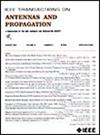A Forward 3-D Scattering Center Modeling Approach of Complex Targets With Deep Cavities for SAR Image Interpretation
IF 5.8
1区 计算机科学
Q1 ENGINEERING, ELECTRICAL & ELECTRONIC
引用次数: 0
Abstract
The structure with multiple reflections is commonly observed in radar targets and can form dominant scattering sources. However, their scattering centers (SCs) tend to deviate from the expected target region and display instability with changing observation angles, complicating SC analysis and interpretation. To elucidate the mapping relationship between apparent SC and target geometry with multiple reflections, this article proposes a forward approach to establish the 3-D parametric SC model for complex targets, particularly those with deep cavities. The forward-constructed model is a concise combination of clear physical parameters that are characterized by robust inferential and descriptive capabilities. Specifically, we first utilize ray tracing and clustering techniques to discretize the scattering of a target into several component-level scattering sources. Then, for each source, a set of physically relevant parameters is calculated in a forward (cause-to-effect) manner, incorporating a deeper understanding of the high-frequency mechanisms. This direct quantitative deductive modeling approach allows for the simultaneous attachment of scattering mechanisms and target information to the SC model. Meanwhile, the physical formation process of the SC type (localized or distributed) and 3-D position is explicated in multiple scattering scenarios. Finally, the efficacy of this forward modeling is validated through comparisons between the model-reconstructed and high-frequency (or full-wave) simulated high-resolution range profiles (HRRPs) or synthetic aperture radar (SAR) images of cavities and complex targets. In addition, those numerical examples also demonstrate the interpretation capabilities of the proposed forward model.面向SAR图像解译的深空复杂目标前向三维散射中心建模方法
多重反射结构是雷达目标中常见的结构,可以形成优势散射源。然而,随着观测角度的变化,它们的散射中心(SCs)往往偏离预期的目标区域,并表现出不稳定性,使SC的分析和解释变得复杂。为了阐明视散射与多反射目标几何形状之间的映射关系,本文提出了一种建立复杂目标,特别是深空腔目标三维参数化散射模型的正向方法。前向构造模型是清晰的物理参数的简明组合,其特点是具有强大的推理和描述能力。具体来说,我们首先利用光线追踪和聚类技术将目标散射离散为几个组件级散射源。然后,对于每个源,以正向(因果)方式计算一组物理相关参数,结合对高频机制的更深入理解。这种直接的定量演绎建模方法允许同时将散射机制和目标信息附加到SC模型中。同时,阐明了多散射场景下SC型(局域或分布式)和三维位置的物理形成过程。最后,通过将模型重建与高频(或全波)模拟高分辨率距离像(hrrp)或合成孔径雷达(SAR)的空腔和复杂目标图像进行比较,验证了该正演模拟的有效性。此外,这些数值算例也验证了所提出的正演模型的解释能力。
本文章由计算机程序翻译,如有差异,请以英文原文为准。
求助全文
约1分钟内获得全文
求助全文
来源期刊
CiteScore
10.40
自引率
28.10%
发文量
968
审稿时长
4.7 months
期刊介绍:
IEEE Transactions on Antennas and Propagation includes theoretical and experimental advances in antennas, including design and development, and in the propagation of electromagnetic waves, including scattering, diffraction, and interaction with continuous media; and applications pertaining to antennas and propagation, such as remote sensing, applied optics, and millimeter and submillimeter wave techniques

 求助内容:
求助内容: 应助结果提醒方式:
应助结果提醒方式:


